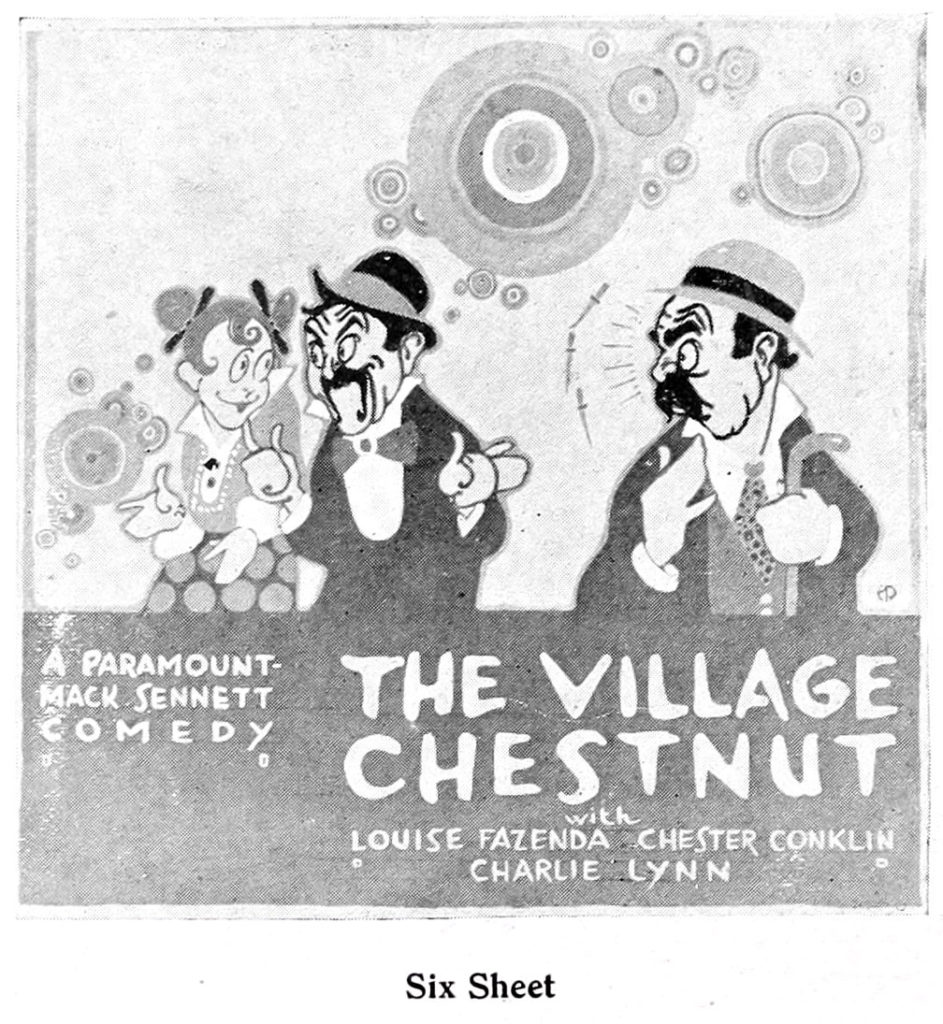The Mack Sennett films released through Paramount in the late ‘teens give you the impression that an effort was underway to take the Keystone format up a level. That is, if you can see one of the Paramounts. Despite who produced them and who released them, they don’t survive well and are remarkably difficult to see.
They’re two reels, and some are evolving from the bifurcated structure of a lot of the Keystone two-reelers: reel one is in location X and reel two is in location Y, etc. There are still plot-line traces of the Keystone farce format, but the films have a little more room for brief set-pieces before the mud, crashes and water kick in.
Hearts And Flowers (1918) is one of these that survives, and MoMA has an excellent 35mm print of it. It may not hold up well on your TV screen in your living room — just read some of the user comments on IMDb — but at the right speed in a theater with an audience and live music, it really plays well. Steve Massa, Ron Magliozzi and I programmed the museum’s 35mm in the second installment of our “Cruel and Unusual Comedy” series at MoMA in 2010, and it was one of the hits of the series. (We ran it at 21 fps.)
And so, it was kind of a big day when the National Film Preservation Foundation posted The Village Chestnut (1918), another of the very rare Paramount-released Sennett two-reelers, earlier this year. Like many obscure and lost American silent comedy films, it survives in a 35mm print with Dutch titles at the EYE Filmmuseum (Netherlands).
You can watch it on the NFPF’s Screening Room site in a new scan of the preservation, its titles translated into English, and with a piano score I created and recorded for this edition. And, if it doesn’t seem too hilarious on your laptop, maybe connect it to a video projector and some good speakers, and have a few dozen friends over to your house. You can even introduce the film by reading the film notes Steve Massa wrote for the NFPF posting.

To see how you should advertise The Village Chestnut for your theater, read the Paramount press book entry here:
